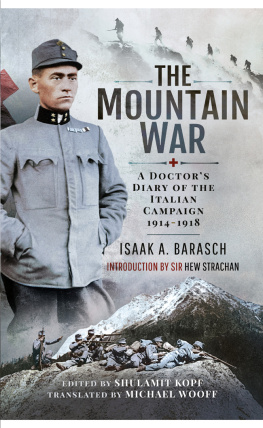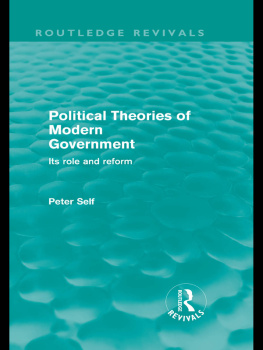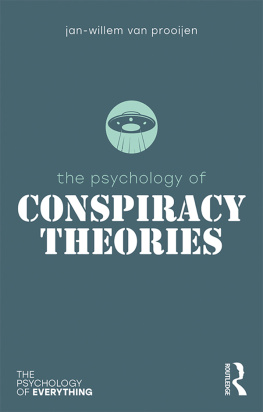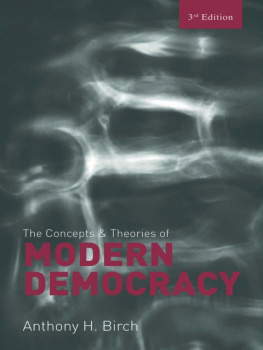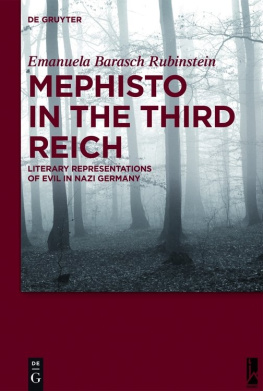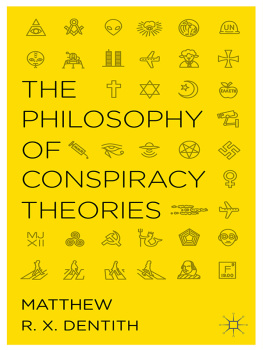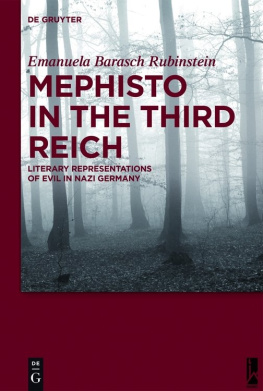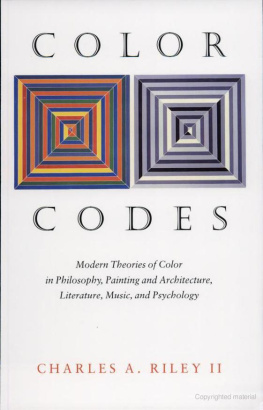Barasch - Modern Theories of Art 2
Here you can read online Barasch - Modern Theories of Art 2 full text of the book (entire story) in english for free. Download pdf and epub, get meaning, cover and reviews about this ebook. City: New York, year: 1998, publisher: New York University Press, genre: Science. Description of the work, (preface) as well as reviews are available. Best literature library LitArk.com created for fans of good reading and offers a wide selection of genres:
Romance novel
Science fiction
Adventure
Detective
Science
History
Home and family
Prose
Art
Politics
Computer
Non-fiction
Religion
Business
Children
Humor
Choose a favorite category and find really read worthwhile books. Enjoy immersion in the world of imagination, feel the emotions of the characters or learn something new for yourself, make an fascinating discovery.

Modern Theories of Art 2: summary, description and annotation
We offer to read an annotation, description, summary or preface (depends on what the author of the book "Modern Theories of Art 2" wrote himself). If you haven't found the necessary information about the book — write in the comments, we will try to find it.
Modern Theories of Art 2 — read online for free the complete book (whole text) full work
Below is the text of the book, divided by pages. System saving the place of the last page read, allows you to conveniently read the book "Modern Theories of Art 2" online for free, without having to search again every time where you left off. Put a bookmark, and you can go to the page where you finished reading at any time.
Font size:
Interval:
Bookmark:
Thank you for buying this ebook, published by NYU Press.
Sign up for our e-newsletters to receive information about forthcoming books, special discounts, and more!
Sign Up!
A publisher of original scholarship since its founding in 1916, New York University Press Produces more than 100 new books each year, with a backlist of 3,000 titles in print. Working across the humanities and social sciences, NYU Press has award-winning lists in sociology, law, cultural and American studies, religion, American history, anthropology, politics, criminology, media and communication, literary studies, and psychology.
Modern Theories of Art, 2
By the Same Author
The Language of Art: Studies in Interpretation
(New York, 1997)
Icon: Studies in the History of an Idea
(New York, 1992, 1995)
Imago Hominis: Studies in the Language of Art
(Vienna, 1991; New York, 1995)
Modern Theories of Art, 1: From Winckelmann to Baudelaire
(New York, 1990)
Giotto and the Language of Gesture
(Cambridge, 1987, 1988, 1990)
Theories of Art: From Plato to Winckelmann
(New York, 1985)
Light and Color in the Italian Renaissance Theory of Art
(New York, 1978)
Gestures of Despair in Medieval and Early Renaissance Art
(New York, 1976)
Crusader Figural Sculpture in the Holy Land
(New Brunswick, 1972)
From Impressionism to Kandinsky
Moshe Barasch

NEW YORK UNIVERSITY PRESS
New York and London
Copyright 1998 by New York University
All rights reserved
Library of Congress Cataloging-in-Publication Data
Barasch, Moshe.
Modern theories of art, 2 : from Impressionism to Kandinsky
Moshe Barasch
p. cm.
Bibliography: p.
Includes indexes.
ISBN 0-8147-1272-x (alk. paper)
ISBN 0-8147-1273-8 (pbk.: alk. paper) 1. ArtPhilosophy. 2. Aesthetics, Modern. I. Title
New York University Press books are printed on acid-free paper,
and their binding materials are chosen for strength and durability.
Manufactured in the United States of America
10 9 8 7 6 5 4 3 2 1
For Bertaonce again
Since this is the final volume in a series of three dealing with art theory I take the opportunity to record some of the debts I incurred in the course of studying the subject and writing its history. My main debt of gratitude goes to the libraries and to the librarians in many universities who unfailingly helped in sometimes difficult searches. I cannot list all of these, but I should not fail to mention the National and University Library in Jerusalem and its devoted staff. Shlomo Goldberg earns my special thanks for continual assistance.
In the course of writing the volumes and preparing them for publication I enjoyed the stimulating interest of Colin Jones, the former director of New York University Press. Our many lively talks over many years helped to concentrate my attention on this work, when other projects often seemed very tempting. Closer home, I should like to thank Mira Reich for continuing intelligent help in many respects. My questions, I am afraid, were not always easy ones, but she always did her utmost to find what I was looking for. I am also grateful to Luba Freedman, colleague in my department and former student, for continuous assistance in many ways.
It is now more than two decades since I began to work with New York University Press, and it is a pleasure to record my gratitude to the staff of the Press, first of all to Despina Papazoglou Gimbel, managing editor, for steady cooperation, combining prudent responsibility for the quality of the book with friendly care for its author.
My most profound gratitude I owe to my wife. Without her encouragement, strict criticism, and patience this book, as well as my other studies, could not have been written.
In the present volume I shall discuss theories of art that emerged and flourished over the relatively short period of roughly four decades. In general, a marked continuity is characteristic of the theory of art; the heritage of the past lives for a long time. The demarcation of such a brief period in the fields history, therefore, calls for an explanation.
Since the mid-nineteenth century, artists and critics, now largely detached from their traditional social and cultural frameworks, have been fully exposed to the quickening pace of general intellectual change. Moreover, as other intellectual disciplines became increasingly concerned with art, they discovered, and often shed light on, new and often surprising aspects of artifacts created in many periods and cultures. Because of the diversification of the interests of artists and critics, their interaction with scientists and scholars in other disciplines, if indirect, increased sharply. One of the results of this versatile and complex process was that art theory, in earlier stages of history perceived as a more or less distinct discipline with a common structure and well defined subject matter, became obscured, its outlines were blurred, and its structure equivocal. On the other hand, however, reflection on the problems of art witnessed an outburst of original creativity which often broke up the time-honored patterns of thinking on the subject. In surveying these decades we necessarily ask ourselves what, in the late nineteenth and early twentieth centuries, can still be perceived as art theory? To whom would such a theory be addressed, and whom was it meant to serve?
This apparently chaotic appearance of reflection on art does not surprise the student. Not only has the quickening of pace, so characteristic of the modern world in general, contributed to this development, but there were also more specific reasons that should be outlined. Differing from what we know from earlier ages, these reasons perhaps also warrant us in distinguishing a period that extends over merely a few decades. The basic conditions within which art theory evolved (and within which we can follow its development) changed dramatically in the second half of the nineteenth century. The old institutions (such as workshops and art schools) in which styles were crystallized and in which aesthetic norms of art were sanctified and upheld for faithful imitation, either completely disappeared or lost whatever significance they may have had in the first half of the nineteenth century.
Already in the first half of the nineteenth century the artists workshop, the traditional framework for articulating and transmitting style in the Renaissance and Baroque periods, was a thing of the past. Though it was occasionally romanticized (as in German Romanticism), it so obviously belonged to the past that nobody even felt the need to polemicize against it. These historic workshops were now the stuff of legend. But after the 1870s the more modern and more prestigious form of art education, that is, the art schools and influential academies of art where styles were forged, also came under attack. By the end of the decades discussed here the academies of art were not only regarded as the embodiment of reaction, but they had in fact hardly any active contribution to make.
At that time the conditions under which art was presented to wide audiences, and painting and sculpture, judged and explained, also underwent profound change. The great exhibitions, the famous Salons, that had earlier presented normative models of established taste to both artists and audiences, completely lost their significance within less than a generation, while the exhibitions that made a real and lasting impact on both artists and audiences did not present the established norms. Increasingly it was the work of dissenting artists that evoked lively reaction. Exhibitions such as that of the impressionists (1873, 1874), of Cezannes paintings (1904), and of the German Expressionists (1906) became the major cultural and artistic events; it was they, rather than the academics, that made a profound impact on the imagination of artists and shaped the expectations of audiences. These unorthodox exhibitions were discussed and remembered, and remained influential in the life of art.
Next pageFont size:
Interval:
Bookmark:
Similar books «Modern Theories of Art 2»
Look at similar books to Modern Theories of Art 2. We have selected literature similar in name and meaning in the hope of providing readers with more options to find new, interesting, not yet read works.
Discussion, reviews of the book Modern Theories of Art 2 and just readers' own opinions. Leave your comments, write what you think about the work, its meaning or the main characters. Specify what exactly you liked and what you didn't like, and why you think so.

